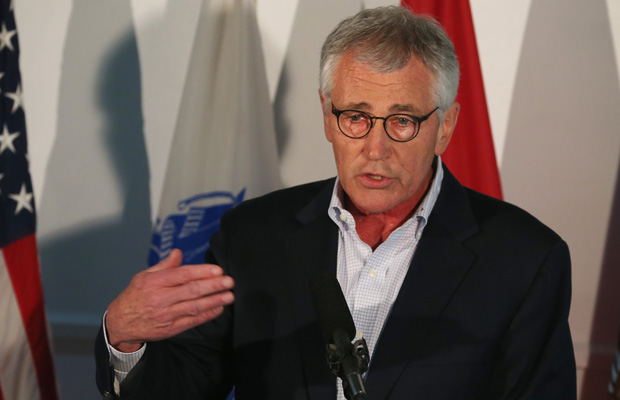Fighting the security threat posed by climate change
A new report by the US Department of Defense outlines the security threat posed by climate change, as well as the steps it’s taking to reduce the damage

Outgoing US Defense Secretary Chuch Hagel has warned of the implications of climate change.
“The challenge of global climate change, while not new to history, is new to the modern world,” said Secretary of Defense Chuck Hagel at the Halifax International Security Forum in November. “Climate change does not directly cause conflict, but it can significantly add to the challenges of global instability, hunger, poverty, and conflict. Food and water shortages, pandemic disease, disputes over refugees and resources, more severe natural disasters – all place additional burdens on economies, societies, and institutions around the world.” Here we take a look at some of major challenges outlined in the Department of Defense’s 2014 Climate Change Roadmap and how the department is working to reduce the damages.
Plans and operations
The changing climate will bring fresh challenges for the global economy, namely by impairing access to food, uprooting coastal infrastructure, spreading disease and forcing mass migration. Destabilising already fragile governments could breed extremist ideologies, and the Department of Defense must aim to mitigate any problems on this front by more closely monitoring any changes on this front. Also, by partnering with the worst affected countries, the US can better channel resources towards reducing the damage before the situation spirals out of control.
Training and testing
Climate change will likely bring dramatic changes for the global economy, so it goes without saying that the Department of Defense must train US forces to meet the ever-evolving nature of the environment. “Maintaining a capable and ready force in the face of a rapidly changing strategic setting requires agility and preparedness,” reads the report. In doing so, the department has introduced the sustainable range programme, installation-level Range Complex Master Plans (RCMPs) and the Readiness and Environmental Protection Initiative (REPI) to prepare its forces appropriately.
Built and natural infrastructure
Without first considering design, operation, maintenance and repair, the adverse effects of climate change could compromise the quality of built and natural infrastructure. “Effective adaptation planning will ensure the continued availability of the land, air, and water resources at our installations and ranges so the department can train and operate today and into the future,” reads the report. Collaboration with internal and external stakeholders is absolutely essential in protecting and improving the department’s built and natural infrastructure far into the future.
Acquisition and supply chain
“Climate change impacts may affect the supplies, equipment, vehicles, and weapons systems the Department buys, where and from whom we buy them, how they are transported and distributed, and how and where they are stockpiled and stored,” according to the report. Only by adjusting operational parameters and charting the effects of climate change will the department protect its current and future supply and acquisition requirements. Crucially, by collaborating with private parties, the department can work towards leveraging best practices and adaptation strategies.
Ongoing efforts
In keeping with past efforts made to wheedle out any climate-related risks before they become unmanageable, the department is employing a range of assessments and projects to re-evaluate climate change risks and opportunities. “The department has initiated several research and survey efforts to more fully identify and characterise vulnerabilities, impacts, and risks posed by climate change.” Risk management represents a huge chunk of the department’s work in this department, and by actively making improvements to operations and processes the consequences will be far less.













